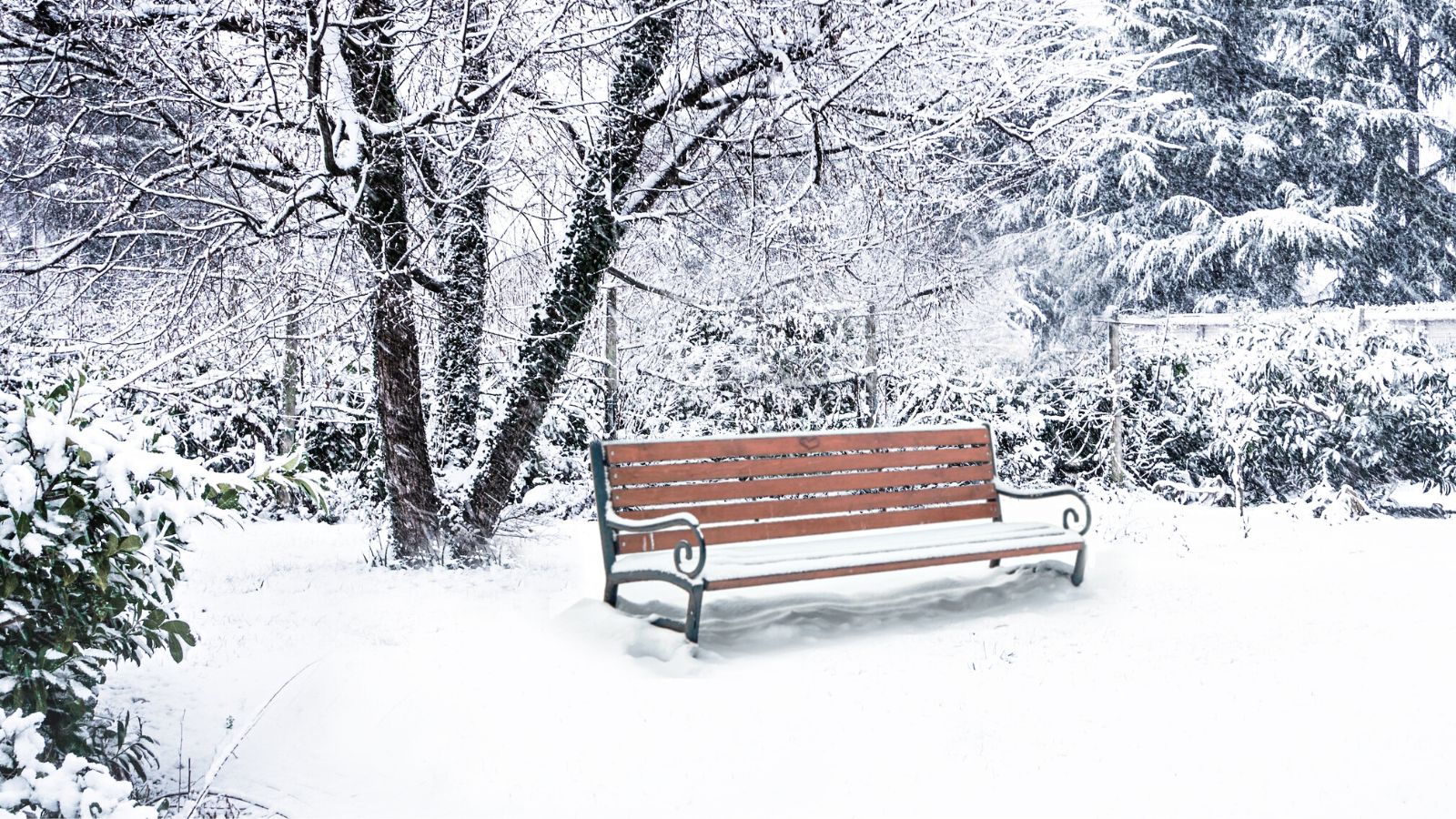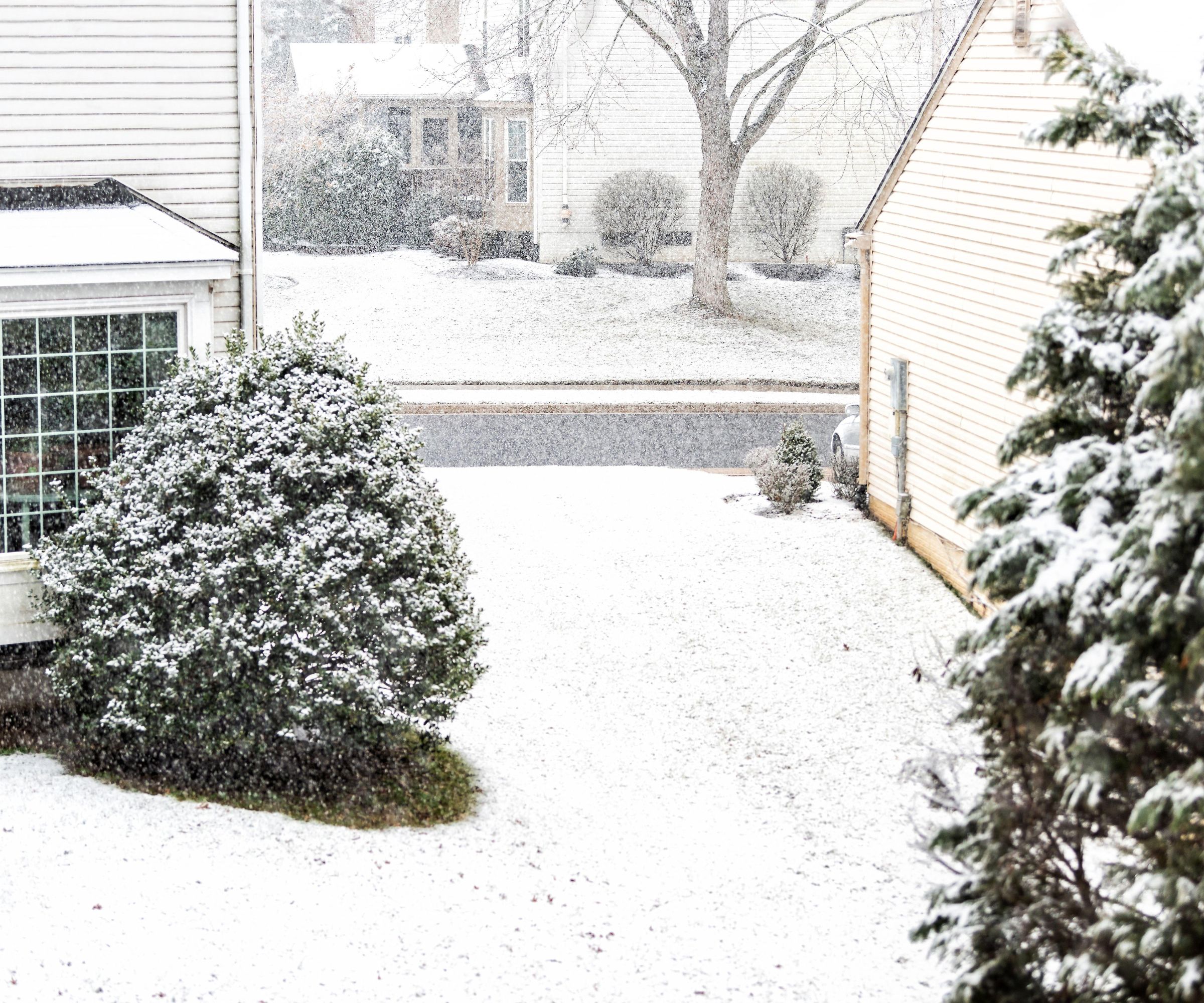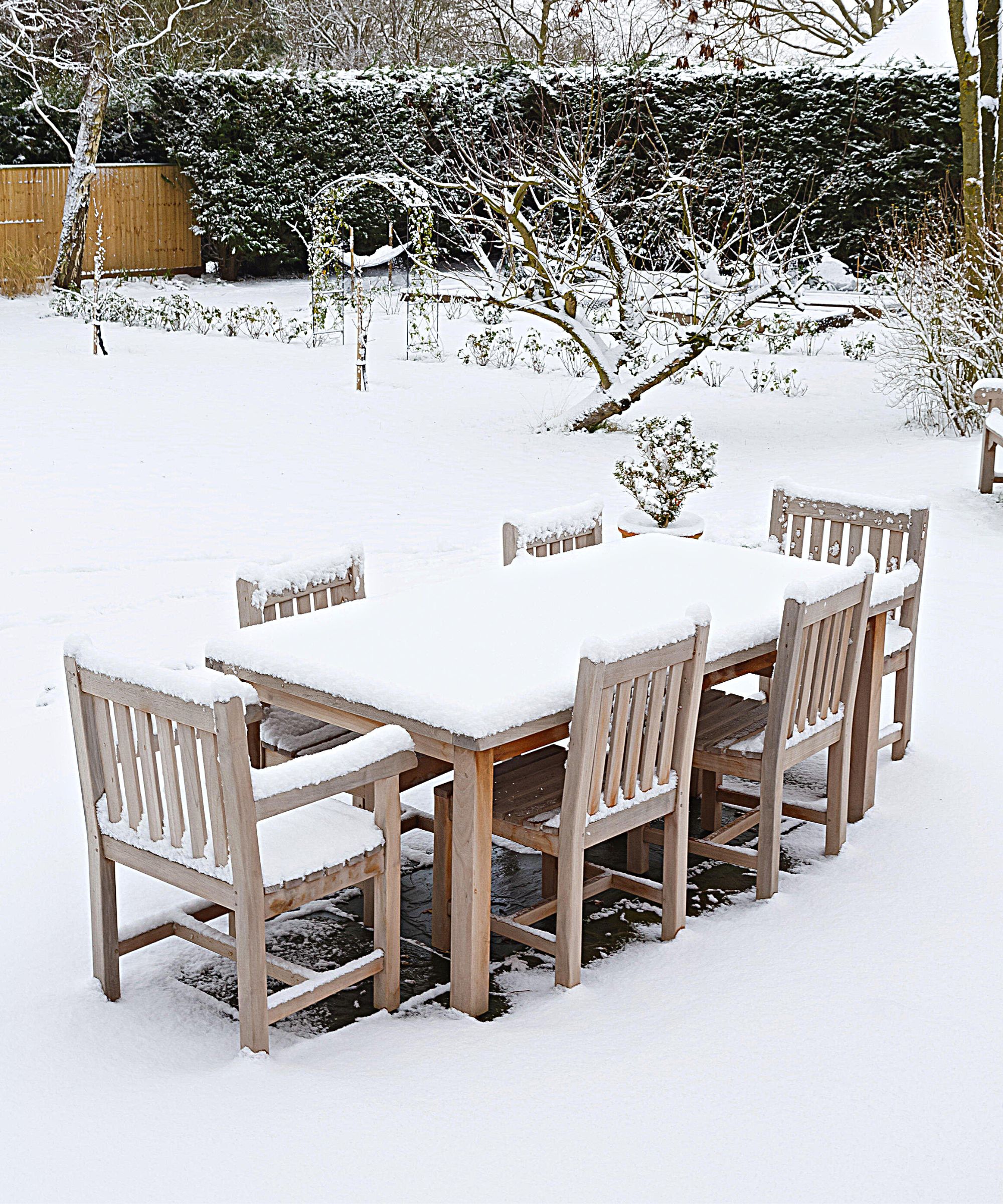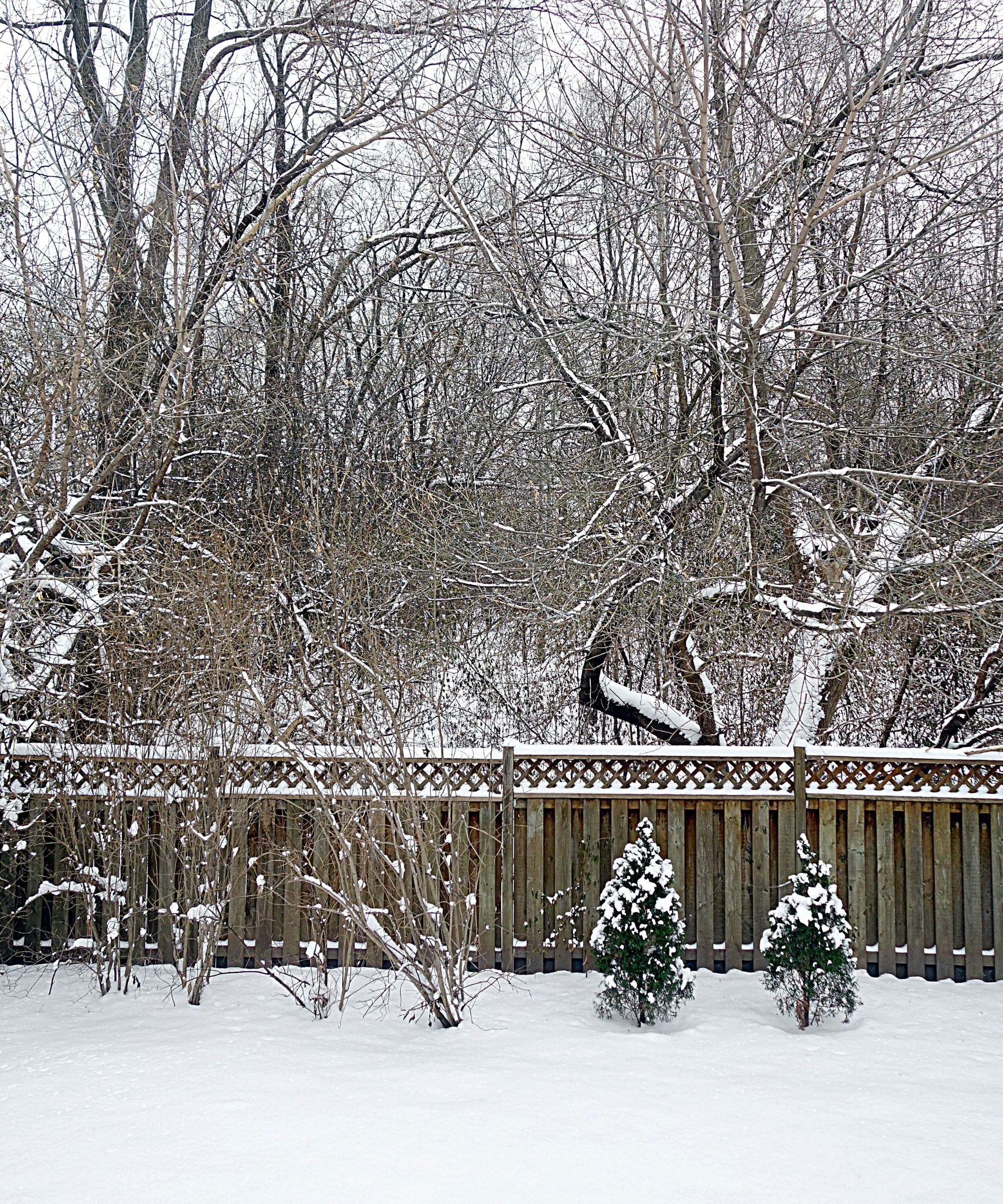Can snow damage a lawn? And winter lawn repair tips you need right now
As cold weather sets in, expert gardeners offer their tips for keeping your lawn protected in freezing temperatures


Many of us dream of a white Christmas, but if you have worked all year on a pristine lawn then heavy snow could be your worst nightmare. Can snow damage a lawn? And if so, just how bad can it get?
The general consensus among experts is that snow shouldn't be too much of a concern for otherwise healthy lawns, especially if you prepared your grass with some winter lawn care beforehand. 'Snow can potentially damage a lawn, but the extent of the damage depends on various factors such as the type of grass, the length and frequency of snow cover, and the severity of the winter weather,' explains Mike Futia, gardening expert, lawn-care enthusiast, and the founder of Nerd Lawn.
Here, we break down the impacts of snow on a lawn and provide expert tips for protecting your grass from freezing temperatures.
Will snow damage a lawn?

Even if you have not winterized a lawn, the chances are snowfall won't be too damaging to your grass.
'The good news is that grass is hardy and can usually live quite happily beneath snowfall without any long-term issues,' reassures Jonathan Hill, lawn expert at Rolawn. 'In fact, snow can form a degree of insulation for the lawn and the temperature between the ground and snow often remains stable, letting enough sunlight through for photosynthesis to continue. With a little consideration during the coldest months, when spring conditions return new growth will begin and you should see your lawn recover from even the harshest of winters.
That is not to say that every lawn, or even all areas of the same lawn, will be able to withstand the freezing temperatures perfectly, however. 'When snow accumulates on the lawn, it can compress the grass and cause the blades to become matted and bent over, which can lead to damage or even death of the grass,' adds Mike Futia. 'Snow can also cause the grass to become dormant, which can result in a loss of color and vigor.'
How to protect a lawn in snow

1. Keep off the grass!
We often spend all summer long out on our lawns, but experts warn that it is best to keep off the grass in winter wherever possible to give your lawn the best chance of bouncing back in spring.
'Frozen grass is especially susceptible to damage since the blades can easily snap if stepped on. So, avoid venturing on your grass while there is frost present to prevent a patchy lawn once the frost thaws,' explains Matt Jordan, Gardening Expert for The Greenhouse People. 'If you have a decent layer of snow that you won't sink through, this should be fine to walk on. Just take care to not churn up the snow too much to protect your grass.'
2. Similarly, don't add snow to your lawn
While snow is fun to play in, it is no fun to shovel – especially when you need to move so much of it out of the way of driveways and walkways. It should go without saying that you should avoid adding all of this extra, freezing weight onto your lawn.
'Take care when clearing paths and driveways and avoid piling snow on your lawn if possible,' reminds Rolawn's Jonathan Hill. 'Heavy piles of snow can cause stress to the lawn and waterlogging can be an issue as large piles melt.'
3. Only move snow if your lawn is suffering rot, otherwise leave it be
Whether or not to move snow from a lawn is hotly debated amongst experts, with many not quite agreeing on what the best course of action is to protect a lawn from frost and damage.
'As the best advice is to stay off your lawn after snowfall, leave it to melt naturally,' says Jonathan Hill of Rolawn. 'Even heavy snowfall tends to apply an even pressure on the lawn and it should bounce back when temperatures warm up. It’s advisable not to use rock salt to melt snow from your lawn, not only can salt leave a residue, it may damage grass roots.'
Leaving moist cold snow on top of ill-prepared grass can cause some common lawn problems like rot, however. In circumstances like these, moving snow away from the lawn carefully could be the only way to salvage it.
'Heavy snowfall, while beautiful, can wreak havoc on lawns – especially if they’ve not been fully prepped ahead of the winter season,' begins Matt Jordan of The Greenhouse People. 'Lawns with grass that has been left to grow long or soil that has become too compacted are the most at risk of developing snow mold. This type of mold can look grey or pink in color and can kill patches of grass, leaving you with a discolored lawn come spring.
'The best way to prevent this is by gently shoveling off excess snow or leaf debris to reduce the chance of moisture building up,' Matt suggests. 'If you think your grass may have snow mold, give your lawn a light raking to help aerate the soil as well as overseeding to help promote new growth.'
How to revitalize a lawn after snow

Even if your grass looks fine after the snow has melted away it will need a little TLC to help get it back in shape for spring and summer.
'By following these steps, you can help revive and rejuvenate your lawn once the snow has melted and the weather starts to warm up,' says Nerd Lawn's Mike Futia. 'It's important to be patient and give the grass time to recover, as it may take a few weeks or months for the lawn to fully recover from the effects of the snow and cold temperatures.'
1. Reinvest in high quality grass seed
Investing in the best fast-growing grass seeds will help to get your lawn in shape in time for spring.
'The better your lawn the higher the chance of its survival in harsh winter conditions. Make sure you buy turf from a supplier with a good, established reputation to increase the likelihood of quality,' says lawn expert Jonathan Hill. 'Turf can be laid at most times during the year but do avoid laying if frosty or snowy weather conditions are forecast.'
2. Overseed your lawn if it is suffering bald spots
'Light damage to your lawn, from snowman making, for example, may leave patches on your lawn once the snow has melted. A well-established lawn should repair in spring when the weather warms up, but it often pays to have some grass seed in case any overseeding is necessary,' says Jonathan Hill.
Although it is more typical to overseed your lawn in fall, you can also patch repair your lawn in the spring time too, or as soon as temperatures regularly reach above 55ºF.
3. Aerate the lawn to help with drainage once the snow has melted
Rapidly melting snow on grass can quickly lead to flooding and waterlogging. One of the best ways to deal with this and fix a waterlogged lawn is to aerate a lawn to provide sufficient drainage after a period of compaction
'Aerating the lawn can help improve drainage and allow the grass to get the nutrients and water it needs to grow,' explains lawn-care expert Mike Futia.
What does frost damage look like on grass?
Cold snaps can often lead to frost damaged lawns. 'Signs of frost damage on a lawn include wilted or bent grass blades, a loss of color, and a thinning of the grass,' explains Mike Futia, gardening expert, lawn-care enthusiast, and the founder of Nerd Lawn. 'Frost damage can be caused by both snow and freezing temperatures, as the cold can cause the grass to become dormant or even die.'
Should you remove snow from grass?
It is advised to leave any snow that has covered a lawn in place and intact until it melts of its own accord. Despite being cold to the touch, a layer of snow actually provides an insulating layer that protects your grass from even colder temperatures preventing frost damage.
Sign up to the Homes & Gardens newsletter
Design expertise in your inbox – from inspiring decorating ideas and beautiful celebrity homes to practical gardening advice and shopping round-ups.

Chiana has been at Homes & Gardens for two years and is our resident 'queen' of non-toxic living. She spends most of her time producing content for the Solved section of the website, helping readers get the most out of their homes through clever decluttering, cleaning, and tidying tips. She was named one of Fixr's top home improvement journalists in 2024.
-
 9 longest-living houseplants – expert recommendations and tips for species that can live over 10 years
9 longest-living houseplants – expert recommendations and tips for species that can live over 10 yearsInvest in these houseplants now for years of luscious foliage in your home
By Tenielle Jordison Published
-
 Kris Jenner's 'organic modern' living room champions the most talked-about trend of 2025 – it's the new way to do luxe-minimalism
Kris Jenner's 'organic modern' living room champions the most talked-about trend of 2025 – it's the new way to do luxe-minimalismSimple silhouettes, organic textures, and industrial nuances infuse functional pieces with elegance to create an effortlessly chic and easy-to-live-with living space
By Jennifer Ebert Published